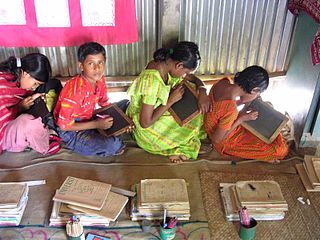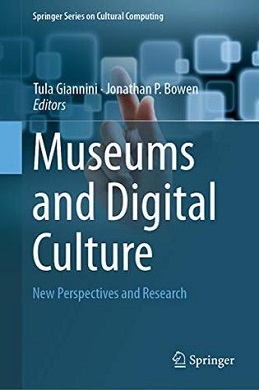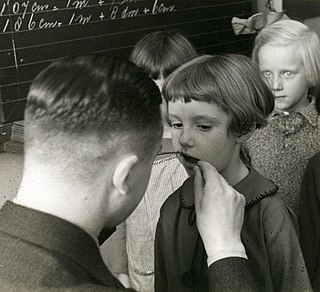 W
WAn Asian quota is a type of racial quota limiting the number of people of Asian descent in an establishment, a special case of numerus clausus. It usually refers to alleged educational quotas in US higher education admissions, specifically by Ivy League universities against Asian Americans, especially persons of East Asian and South Asian descent starting in the late 1980s. These allegations of discrimination have been denied by US universities. Asian quotas have been compared to earlier claims of Jewish quotas, which are believed to limit the admissions of a model minority from the 1910s to the 1950s. Jewish quotas were denied at the time, but their existence is rarely disputed now. Some have thus called Asian-Americans "The New Jews" of university admissions.
 W
WThe subject of blindness and education has included evolving approaches and public perceptions of how best to address the special needs of blind students. The practice of institutionalizing the blind in asylums has a history extending back over a thousand years, but it was not until the 18th century that authorities created schools for them where blind children, particularly those more privileged, were usually educated in such specialized settings. These institutions provided simple vocational and adaptive training, as well as grounding in academic subjects offered through alternative formats. Literature, for example, was being made available to blind students by way of embossed Roman letters.
 W
WClass size refers to the number of students a teacher faces during a given period of instruction.
 W
WRace-integration busing in the United States was the practice of assigning and transporting students to schools within or outside their local school districts in an effort to diversify the racial make-up of schools. While the 1954 U.S. Supreme Court landmark decision in Brown v. Board of Education declared racial segregation in public schools unconstitutional, many American schools continue to remain largely uni-racial due to housing inequality. In an effort to address the ongoing de facto segregation in schools, the 1971 Supreme Court decision, Swann v. Charlotte-Mecklenburg Board of Education, ruled that the federal courts could use busing as a further integration tool to achieve racial balance.
 W
WEducate Now is a non-profit education reform organization founded in 2008 and based in New Orleans, Louisiana. Its founder is education reform advocate and former State Board of Elementary and Secondary Education (BESE) member Leslie Jacobs. Ms. Jacobs was a key architect of Louisiana’s Recovery School District and is a former Orleans Parish School Board member.
 W
WEducational inequality is the unequal distribution of academic resources, including but not limited to; school funding, qualified and experienced teachers, books, and technologies to socially excluded communities. These communities tend to be historically disadvantaged and oppressed. More times than not, individuals belonging to these marginalized groups are also denied access to the schools with abundant resources. Inequality leads to major differences in the educational success or efficiency of these individuals and ultimately suppresses social and economic mobility. See Statistic sections for more information.
 W
WEgalitarian dialogue is a dialogue in which contributions are considered according to the validity of their reasoning, instead of according to the status or position of power of those who make them. Although previously used widely in the social sciences and in reference to the Bakhtinian philosophy of dialogue, it was first systematically applied to dialogical education by Ramón Flecha in his 2000 work Sharing Words. Theory and Practice of Dialogic Learning.
 W
WFagging was a traditional practice in British public schools and also at many other boarding schools, whereby younger pupils were required to act as personal servants to the eldest boys. Although probably originating earlier, the first accounts of fagging appeared in the late seventeenth century. Fagging sometimes involved physical abuse and/or sexual abuse. Although diminishing in its severity over the centuries, the practice of virtual enslavement of junior pupils by their seniors continued in some institutions until the last decades of the 20th century.
 W
WFemale education is a catch-all term of a complex set of issues and debates surrounding education for girls and women. It is frequently called girl's education or women's education. It includes areas of gender equality and access to education. The education of women and girls is important connection to the alleviation of poverty. Broader related topics include single-sex education and religious education for women, in which education is divided gender lines.
 W
WFemale education in STEM includes child and adult female represented in the fields of science, technology, engineering, and mathematics (STEM). In 2017, 33% of students in STEM fields were women.
 W
WFree education is education funded through government spending or charitable organizations rather than tuition funding. Many models of free higher education have been proposed. Primary school and other comprehensive or compulsory education is free in many countries, including post-graduate studies in the Nordic countries. The Article 13 of International Covenant on Economic, Social and Cultural Rights ensures the right to free education at primary education and progressive introduction of it at secondary and higher education as the right to education.
 W
WFushūgaku (不就学) is a Japanese term meaning "non-attendance of school". Fushūgaku refers to students in Japan, primarily foreigners and non-citizens, that are not currently attending school. However, the term is generally used in reference to people that never registered for school rather than people that registered but are not attending.
 W
WThe Goulburn School Strike was a protest action in July 1962 in Goulburn, New South Wales, Australia.
 W
WHazing, initiation, bastardisation, ragging, or deposition, refers to any activity expected of someone in joining or participating in a group that humiliates, degrades, abuses, or endangers them regardless of a person's willingness to participate.
 W
WThis is a list of hazing deaths in the United States. This is not an exhaustive list. An exact list is not available because there is no central system for tracking hazing deaths, and the role of hazing in some deaths is subject to disagreement. Inclusion in this list requires that the incident was described by the media as a hazing-related death. Incidents involving criminal or civil proceedings that did not find a definite link with hazing may still be included if they meet this criterion.
 W
WLack of physical education is the inadequacy of the provision and effectiveness of exercise and physical activity within modern education.
 W
WThe math–verbal achievement gap is a phenomenon first observed by Richard Rothstein in a brief 2002 article written in The New York Times. This achievement gap reveals a growing disparity in the United States between the rising national average on the math portions of the college entry SAT and ACT exams, as opposed to the flat-lining verbal portions on the same tests.
 W
WThe Mid-day Meal Scheme is a school meal programme in India designed to better the nutritional standing of school-age children nationwide. The programme supplies free lunches on working days for children in primary and upper primary classes in government, government aided, local body, Education Guarantee Scheme, and alternate innovative education centres, Madarsa and Maqtabs supported under Sarva Shiksha Abhiyan, and National Child Labour Project schools run by the ministry of labour. Serving 120,000,000 children in over 1,265,000 schools and Education Guarantee Scheme centres, it is the largest of its kind in the world.
 W
WMuseums and Digital Culture (2019), edited by Tula Giannini and Jonathan P. Bowen, is an interdisciplinary book about developments in digital culture with respect to museums.
 W
WPay-for-Performance is a method of employee motivation meant to improve performance in the United States federal government by offering incentives such as salary increases, bonuses, and benefits. It is a similar concept to Merit Pay for public teachers and it follows basic models from Performance-related Pay in the private sector. According to recent studies, however, there are key differences in how pay-for-performance models influence federal employees in public service roles. James Perry is one scholar who has conducted such studies. His research reveals that public servants tend to be more intrinsically motivated, and thus, are prone to have a negative reaction to monetary incentives. There is still debate, however, on what exactly makes the public sector different.
 W
WPlagiarism is the representation of another author's language, thoughts, ideas, or expressions as one's own original work. In educational contexts, there are differing definitions of plagiarism depending on the institution. Prominent scholars of plagiarism include Rebecca Moore Howard, Susan Blum, Tracey Bretag, and Sarah Elaine Eaton, among others.
 W
WSchool-based health and nutrition services are services provided through the school system to improve the health and well-being of children and in some cases whole families and the broader community. These services have been developed in different ways around the globe but the fundamentals are constant: the early detection, correction, prevention or amelioration of disease, disability and abuse from which school aged children can suffer.
 W
WA school uniform is a uniform worn by students primarily for a school or otherwise educational institution. They are common in primary and secondary schools in various countries.
 W
WSchool uniform is a practice which dates to the 16th century in England. Charity schools such Christ's Hospital, founded in 1552 in London, were among the first schools to use a uniform for their students. The earliest documented proof of institutionalised use of a standard academic dress dates back to 1222 when the Archbishop of Canterbury ordered the wearing of the cappa clausa.
 W
WYouth activism is the participation in community organizing for social change by persons between the ages of 15–24. Youth activism has led to a shift in political participation and activism. A notable shift within youth activism is the rise of “Alter-Activism” resulting in an emphasis on lived experiences and connectivity amongst young activists. The young activists have taken lead roles in public protest and advocacy around many issues like climate change, abortion rights and gun violence. Different from past protest or advocacy, technology has become the backbone to many of these modern youth movements. It has been shown in multiple studies that internet use along with seeking information online is shown to have positive impacts on political engagement. Popular applications like Twitter, Instagram and YouTube have become the newest tools for young activist in the 21st century. Technology and the use of digital media has changed the way youth participate in activism globally, and youth are more active in media than older generations.